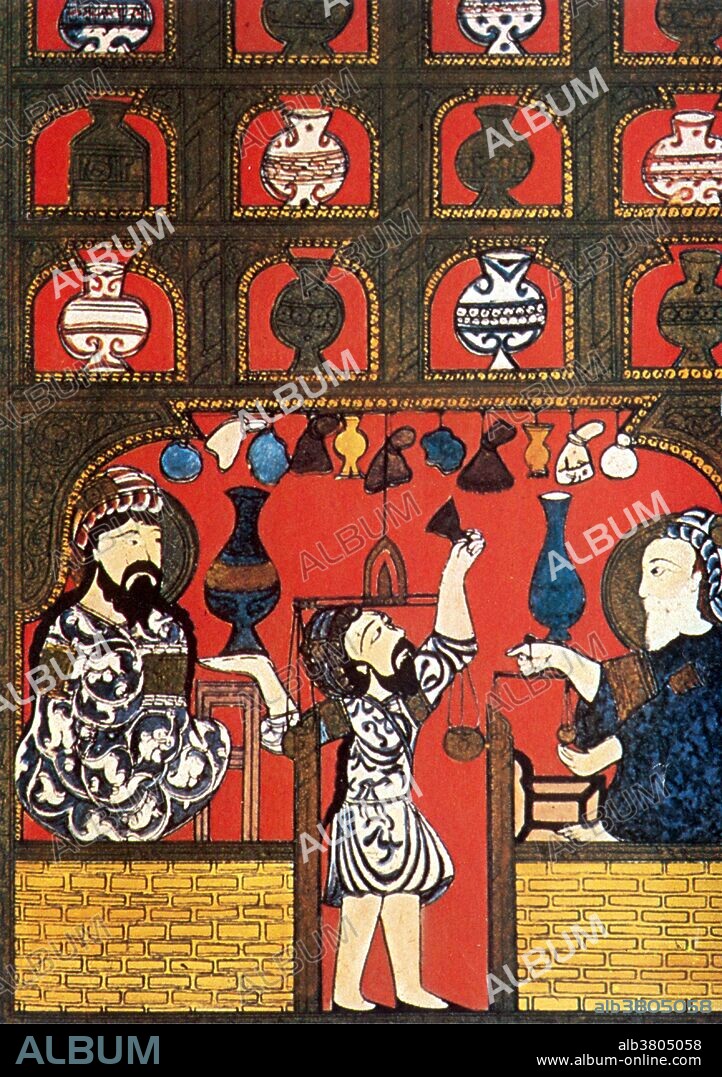alb3805058
Arab Pharmacy, 13th Century

|
Ajouter à une autre Lightbox |
|
Ajouter à une autre Lightbox |



Avez-vous déjà un compte? S'identifier
Vous n'avez pas de compte ? S'inscrire
Acheter cette image.
Sélectionnez l'usage:

Titre:
Arab Pharmacy, 13th Century
Légende:
Voir la traduction automatique
The history of pharmacy as an independent science dates back to the first third of the 19th century. Before then, pharmacy evolved from antiquity as part of medicine. In Baghdad the first pharmacies, or drug stores, were established in 754, under the Abbasid Caliphate during the Islamic Golden Age. By the 9th century, these pharmacies were state-regulated. The advances made in the Middle East in botany and chemistry led medicine in medieval Islam substantially to develop pharmacology. Al-Biruni (973-1050) wrote one of the most valuable Islamic works on pharmacology entitled Kitab al-Saydalah (The Book of Drugs), where he gave detailed knowledge of the properties of drugs and outlined the role of pharmacy and the functions and duties of the pharmacist. Ibn Sina (Avicenna), too, described no less than 700 preparations, their properties, mode of action and their indications (Canon of Medicine).
Crédit:
Album / NYPL/Science Source
Autorisations:
Modèle: Non - Propriété: Non
Questions sur les droits?
Questions sur les droits?
Taille de l'image:
3175 x 4500 px | 40.9 MB
Taille d'impression:
26.9 x 38.1 cm | 10.6 x 15.0 in (300 dpi)
Mots clés:
13E SIECLE • 13EME S • ILLUSTRATION • ISLAMIQUE • MEDICAL • MUSULMAN • POTION • PROFESSION • TREIZIÈME SIÈCLE • XIIIE SIECLE
 Pinterest
Pinterest Twitter
Twitter Facebook
Facebook Copier le lien
Copier le lien Email
Email
